🚗10 Memorable Korean Highway Driving Tips | Fun Rest Area Food & Holiday Road Trip Guide 2025”
Driving in South Korea during Chuseok or a long holiday can be an unforgettable adventure for foreign visitors. The country’s highways are efficient, well-maintained, and connected nationwide, while its rest areas are cultural icons in themselves. Here are 10 insider tips to help you navigate Korean highways safely and enjoyably.
1. Driving Basics in Korea
Korea drives on the right-hand side.
Highway speed limits: 100–120 km/h, national roads often 80 km/h.
The leftmost lane (1st lane) is for overtaking only—long-term cruising can get you fined.
- The official website for real-time traffic updates and congestion status on Korea’s highways.: ROAD PLUS
2. Hi-Pass & Toll System
Hi-Pass (ETC) is the main toll system. Cars with onboard devices pass blue-marked lanes without stopping.
Without Hi-Pass: take a ticket at entry, pay by card when exiting via red-marked lanes.
Lost ticket? Simply say: “No ticket, sorry.” Staff will check your route.
💡 Tip: Korea is nearly cashless—credit cards are accepted almost everywhere.
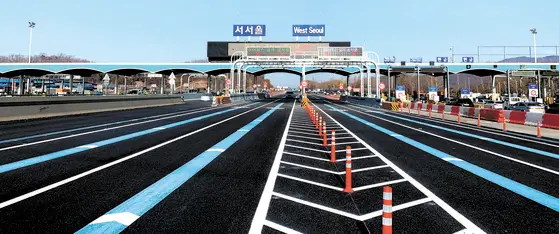
3. Ramp & Lane Merging
Highway entry/exit ramps are shorter than in many countries.
Adjust speed early and be prepared to merge quickly.
4. Speed Cameras & Enforcement
Korea has fixed, mobile, rear-facing, and section cameras.
Section control checks your average speed, not just at checkpoints.
💡 Tip: Always stick to the speed limit across the whole section.
5. Navigation Apps
T-map: strong voice & camera alerts (great for first-timers).
Naver Map / Kakao Map: offer public transit integration + English interface.
Save addresses in Korean screenshots—foreign names may not be recognized.
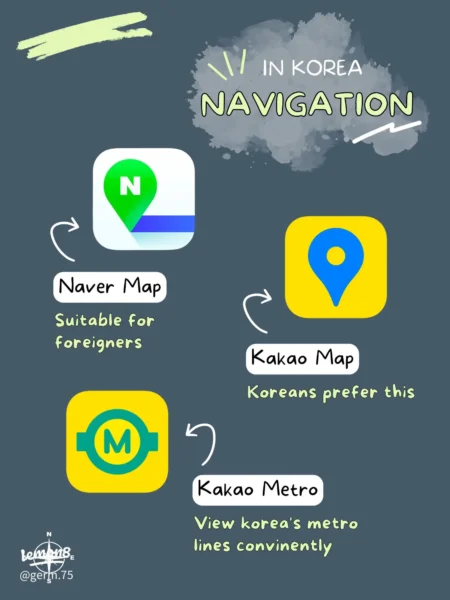
6. Holiday Driving Survival
Speed cameras are everywhere – fixed, mobile, rear-facing, and average-speed cameras. Don’t just slow down for one camera; keep to the limit through the entire zone.
Navigation apps are lifesavers:
T-map → strongest speed camera alerts.
Naver Map & Kakao Map → good for foreigners, English option available.
Traffic patterns:
Early mornings = smooth.
After 10 AM on holidays, expect serious jams.
Avoid night driving in the rain: visibility drops fast, and lanes are harder to spot.
7. Rest Area Food Culture
Korean highway rest areas aren’t just pit stops – they’re mini travel destinations.
🍴 Famous Rest Stop Foods
Anseong → Sotteok-sotteok (sausage + rice cake skewer)
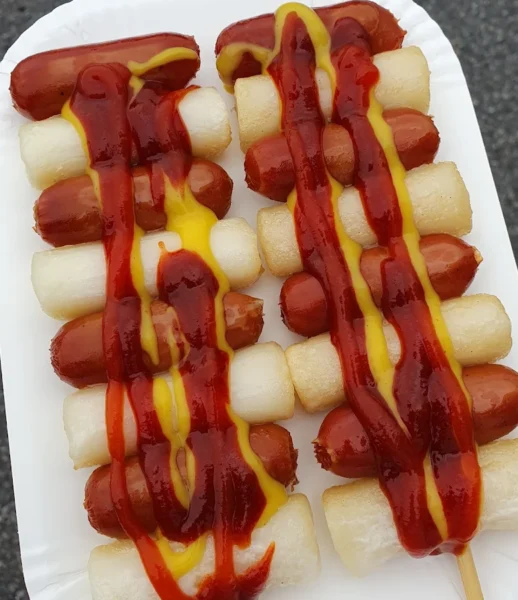
Icheon → Traditional Korean rice set meal
Hoengseong → Hanwoo beef patties & burgers
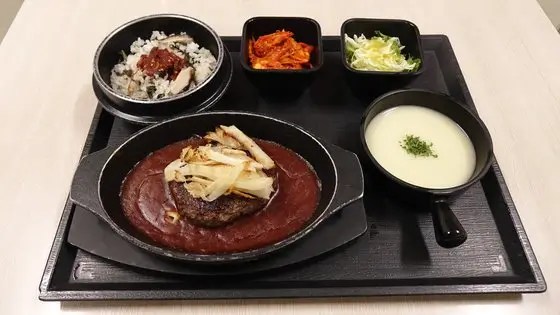
Boseong Green Tea → Green tea ice cream
Deokpyeong → Pet-friendly rest stop & theme park
🛍️ Rest areas often feature convenience stores, gift shops, local specialties, and even viewing decks, walking trails, or dog parks.
8. Parking & Rest Area Tips
Parking is often paid, but purchases at restaurants/shops can validate or waive fees.
Some rest areas have dog parks & walking trails.
Always park rear-in—it’s the Korean standard for safety.
9. Car Rental & Insurance
Requirements: IDP + home license + passport + credit card.
Minimum age: 21; under 25 may pay a young driver fee.
Book via international platforms (Klook, RentalCars, Hertz) for English support.
Always opt for Full Coverage insurance—scratches and parking accidents are common.
10. Safety & Local Advice
No drinking and driving: 0.03% BAC = license revoked.
City driving (Seoul, Busan) is stressful → use public transit instead.
Scenic drives (e.g., Route 7 from Pohang to Gangneung) offer incredible sea views.
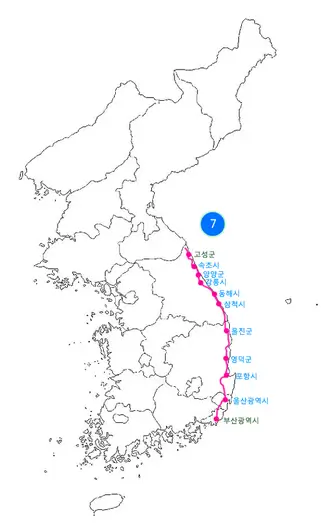
✅ Final Checklist
IDP + passport + insurance contacts ready
Hi-Pass charged / toll card ready
GPS app set to English
Drive defensively, expect sudden lane changes
In case of accidents → move to safety, call insurance first
🏁 Final Thoughts
Korea’s highways are well-maintained, efficient, and safe, but what makes them unforgettable is the rest stop culture. Trying regional snacks, stretching your legs, and even visiting a pet park are all part of the fun.
With the right prep – Hi-Pass, navigation apps, and patience – holiday driving in Korea can be a memorable, delicious, and uniquely local experience.
👉 Did you miss Part 1: Essential Korean Driving Rules & Road Culture?
Catch up here: Korean Driving Rules – Insider Tips
For subway navigation tips, also check: Seoul Subway Guide.
🚗 한국 운전 가이드 ② 휴일 고속도로 & 휴게소 문화 (10가지 핵심 팁)
추석이나 황금연휴에 한국에서 운전하는 것은 외국인 여행자들에게 특별한 경험이 될 수 있습니다. 고속도로는 잘 관리되어 있고, 휴게소 문화는 여행의 또 다른 즐거움으로 꼽힙니다. 이번 글에서는 외국인이 꼭 알아야 할 10가지 핵심 팁을 정리했습니다.
1. 기본 주행 규칙
한국은 우측 통행.
고속도로 제한속도는 100~120km/h, 국도는 80km/h 이하.
**1차로(맨 왼쪽)**는 추월 전용 차선, 장시간 정속 주행 시 단속 대상.
2. 톨게이트 & 하이패스
한국은 **하이패스(전자요금 결제)**가 보편화.
파란색: 하이패스 전용 (무정차)
빨간색: 일반 차량 (티켓 → 출구 결제)
티켓 분실 시 “No ticket, sorry”라고 하면 정상 요금 부과.
3. 진입·합류 주의
고속도로 램프 길이가 짧아 합류 시 속도 조절 필수.
특히 연휴 기간에는 진입로에서 갑작스러운 급정거나 끼어들기 주의.
4. 카메라 & 단속
한국은 고정식·이동식·후방·구간단속까지 다양.
구간단속은 전체 평균 속도로 계산 → 전 구간 속도 유지 필요.
5. 네비게이션 활용
T맵: 카메라·과속 방지턱 경고가 강력.
네이버/카카오맵: 영어 지원, 대중교통 연계 강점.
주소는 한국어 스크린샷 저장 → 영문 인식 안 될 수 있음.
6. 연휴 교통 패턴
오전 이른 시간 → 비교적 원활.
10시 이후부터 정체 심화, 오후·저녁까지 이어짐.
비 오는 밤은 가급적 운전 피하는 것이 안전.
7. 휴게소 음식 명물
안성휴게소 → 소떡소떡
이천휴게소 → 쌀밥 정식
횡성휴게소 → 한우 떡갈비·버거
보성녹차휴게소 → 녹차 아이스크림
덕평휴게소 → 반려견 테마파크
8. 휴게소 이용 팁
영수증 제시 시 주차비 감면/무료 가능.
기념품숍·특산품 매장·전망대·산책로가 있어 소규모 관광지 역할.
가족·반려견 여행객에게도 인기.
9. 렌터카 & 보험
필요서류: 국제운전면허증 + 본국 면허 + 여권 + 신용카드.
만 21세 이상, 25세 미만은 Young Driver Fee 발생 가능.
영어 지원이 약해 → Klook, RentalCars, Hertz 등 글로벌 플랫폼 추천.
풀 커버리지 보험은 필수.
10. 지역별 운전 팁
서울·부산: 교통 혼잡 + 주차 스트레스 → 대중교통 권장.
지방·해안도로: 드라이브 매력 극대화 (예: 포항~강릉 7번 국도).
음주운전은 **0.03%**만 넘어도 면허 취소.
✅ 체크리스트
국제운전면허증(IDP), 여권, 보험사 연락처
하이패스 또는 톨게이트 준비
네비게이션 앱 설치·볼륨 조절
연휴 교통 패턴 숙지
방어운전 & 주차 주의